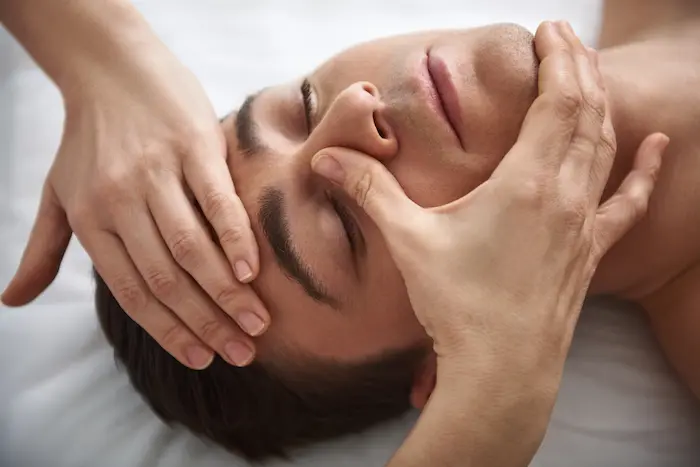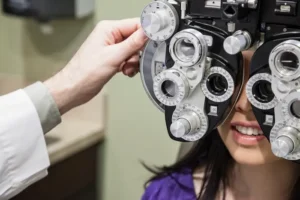With hours spent in front of screens, from computers and smartphones to televisions, our visual health is constantly challenged.
Prolonged screen exposure can cause digital eye strain, leading to symptoms like dryness, irritation, blurred vision, and headaches.
This is where Ancient Chinese Eye Rolling Exercises for Modern Screen Users come in—a centuries-old practice designed to promote eye health, reduce tension, and improve focus. These traditional techniques, rooted in Chinese wellness practices, offer a natural way to care for our eyes in today’s screen-dominated world.
1. The Historical Roots of Ancient Chinese Eye Exercise
Eye care has been a central focus of wellness practices in ancient China for thousands of years. The concept of balancing the body’s energy, or “Qi,” is at the heart of Traditional Chinese Medicine (TCM), and eye health is seen as a critical component of overall wellness. Historical records reveal that scholars, monks, and even emperors practiced various eye exercises to combat strain from long hours of reading or studying by candlelight. These routines were believed to enhance vision, reduce stress, and promote mental clarity.
Ancient Chinese eye exercises emphasize intentional, gentle movements, especially eye rolling, to promote flexibility in the muscles around the eyes and increase blood flow. They include massages, rolling exercises, and acupressure techniques that work together to relieve tension and stimulate circulation.
2. How Screen Time Affects Modern Eye Health
Today’s world is far removed from ancient China’s candlelit study rooms. The average adult spends more than 10 hours a day on screens, whether for work, entertainment, or social interaction. The impact of this extensive screen time is significant, with digital eye strain becoming a common concern among people of all ages. Some of the main issues include:
- Blue Light Exposure: Screens emit high-energy blue light, which can penetrate deep into the eye and contribute to discomfort, as well as potential long-term effects on the retina.
- Near-Focusing Fatigue: Hours of close-up focus strain the eye muscles, leading to fatigue and blurriness over time.
- Reduced Blink Rate: Focusing on a screen reduces blink rate by nearly 60%, which can lead to dry eyes and irritation.
Given these modern challenges, Ancient Chinese Eye Rolling Exercises for Modern Screen Users can serve as a powerful counterbalance to the daily demands of screen use.
3. Understanding the Core Techniques in Ancient Chinese Eye Rolling Exercises
Ancient Chinese Eye Rolling Exercises for Modern Screen Users encompass a series of intentional eye movements designed to work the eye muscles, enhance flexibility, and promote relaxation. Here are the primary techniques that you can start practicing:
- Basic Eye Rolling:
- Sit comfortably, relax, and close your eyes.
- Slowly roll your eyes in a circular motion. Start by moving clockwise, completing 10-12 rotations, then switch to counterclockwise for another set.
- This exercise helps release tension and promotes flexibility in the eye muscles.
- Focused Eye Shifting:
- Find a focal point at a distance and look at it for a few seconds.
- Shift your gaze to a closer object, then back to the distant point.
- Repeat this 8-10 times to strengthen your focus and reduce near-focusing fatigue.
- Eye Acupressure Massage:
- Use your fingertips to gently press on the inner corners of your eyes and along the eyebrow line.
- This technique is believed to stimulate energy flow and reduce stress around the eye area.
Incorporating Ancient Chinese Eye Rolling Exercises for Modern Screen Users in your daily routine can help relieve strain and provide much-needed relaxation for your eyes.
Here you like Colored Contact Lenses: Types and How to Use Them Safely
4. Benefits of Ancient Chinese Eye Rolling Exercises for Today’s Screen Users
Regular practice of Ancient Chinese Eye Rolling Exercises for Modern Screen Users offers a range of benefits tailored to the demands of screen-heavy lifestyles. Here are some key advantages:
- Reduces Eye Strain: The exercises help alleviate tension in the eye muscles, reducing strain and promoting relaxation.
- Enhances Eye Flexibility: Eye rolling exercises improve flexibility in the muscles surrounding the eyes, helping them adapt to various visual demands.
- Improves Focus and Concentration: By training the eyes to shift focus, these exercises can aid concentration, which is especially helpful during long work or study sessions.
- Promotes Circulation: Increased blood flow brings oxygen and nutrients to the eye area, potentially improving overall eye health.
- Supports Better Sleep: Reducing screen-induced eye strain can indirectly improve sleep quality by helping you relax and unwind.
5. How to Incorporate Eye Rolling Exercises into Your Daily Routine
Establishing a regular practice of Ancient Chinese Eye Rolling Exercises for Modern Screen Users can be simple and effective. Here’s how to get started:
- Start with Short Sessions: Begin with 3-5 minutes of exercises each morning and evening, gradually increasing the time as you become comfortable.
- Set Reminders: Use your phone or computer to set hourly reminders to take brief eye exercise breaks throughout the day.
- Pair with Screen Breaks: Whenever you take a break from your screen, practice a few eye exercises as part of your routine.
Integrating these exercises doesn’t require a significant time investment but can have lasting effects on eye comfort and health.
Many practitioners pair Chinese Eye Rolling Exercises with targeted acupressure to relieve eye fatigue — see this guide on acupressure points for eyes at Healthline.
Also, Chinese schools mandated daily eye exercises in national health policy guidelines, underscoring the long-standing role of eye massage in vision health
6. Additional Eye Care Tips for Screen Users
To maximize the benefits of Ancient Chinese Eye Rolling Exercises for Modern Screen Users, combine them with other eye care habits:
- The 20-20-20 Rule: Every 20 minutes, take a 20-second break to look at something 20 feet away.
- Adjust Screen Settings: Reduce brightness, increase text size, and adjust color contrast to make your screen more eye-friendly.
- Practice Good Posture: Keep your screen at eye level to reduce strain on both your eyes and neck.
- Stay Hydrated: Drinking water can help maintain moisture in your eyes, especially important for reducing dryness caused by prolonged screen exposure.
Conclusion
As screen time continues to increase, the need for effective eye care strategies is more relevant than ever. Ancient Chinese Eye Rolling Exercises for Modern Screen Users offer a unique, low-cost way to reduce eye strain, improve focus, and promote relaxation. These exercises connect modern users with ancient wisdom, providing an easy-to-follow method for enhancing eye health amid our digitally focused lives.
FAQs
- What exactly are Ancient Chinese Eye Rolling Exercises?
These exercises involve gentle eye movements and massages rooted in Traditional Chinese Medicine. They’re designed to improve circulation, reduce strain, and enhance focus. - How soon can I see results?
With daily practice, many users report feeling relief within a week, with greater improvements over a few months of consistent practice. - Are these exercises safe for everyone?
Yes, generally. However, those with serious eye conditions should consult a doctor before starting any new eye regimen. - How often should I perform these exercises?
Practicing for 3-5 minutes, once or twice daily, is typically sufficient for noticeable benefits. - Can these exercises completely replace other eye care methods?
These exercises are complementary to other eye care habits, like regular screen breaks and a healthy diet, rather than a replacement.




